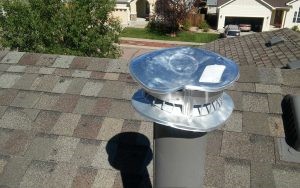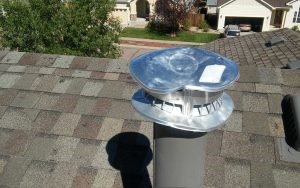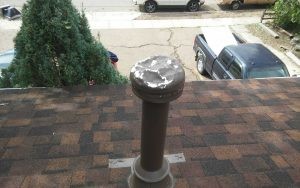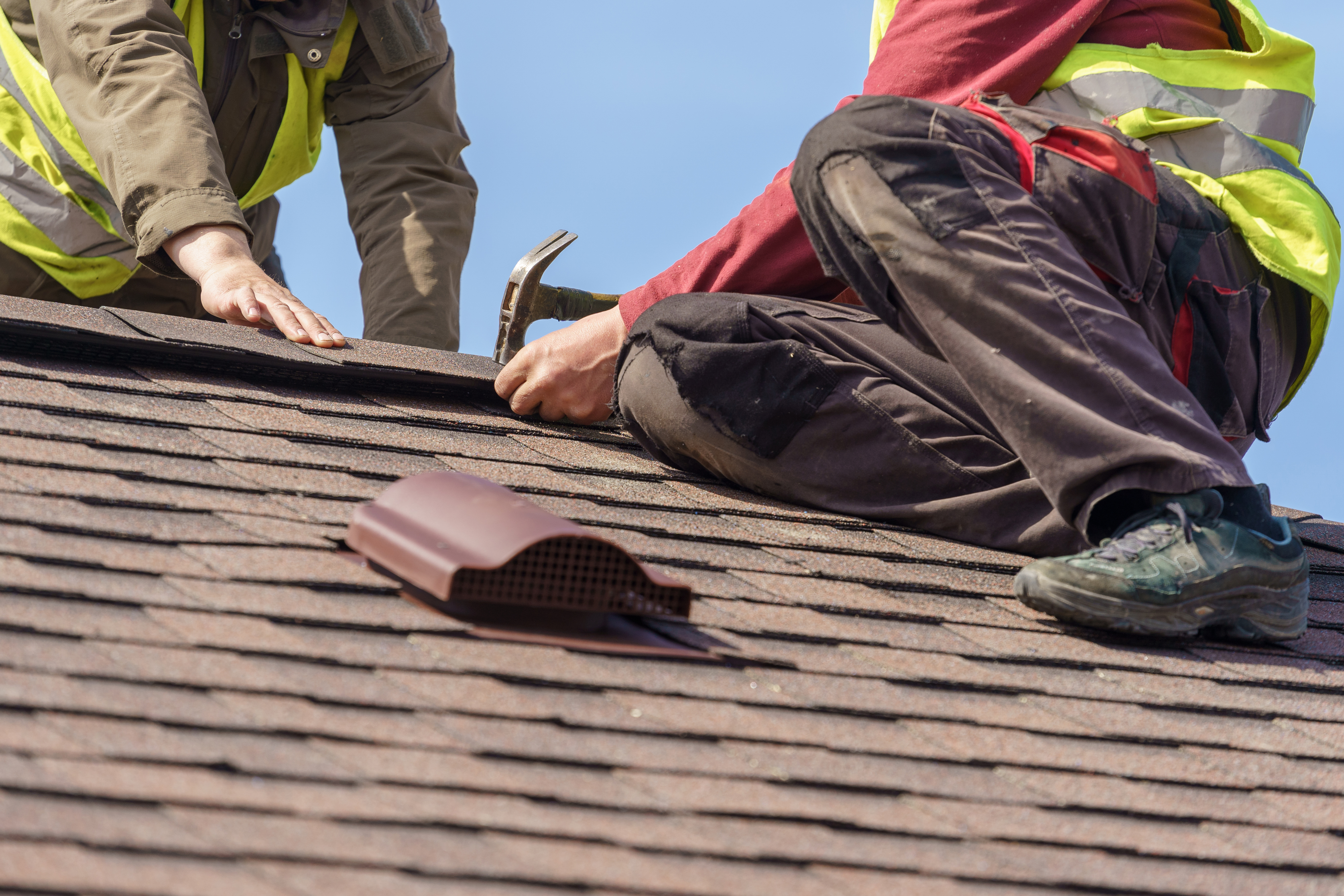How Is Hail Damaging My HVAC System?
Nearly every home has a furnace and/or water heater that vents through the roof. At the top of that pipe is a rain cap that prevents rain and snow from going down that 5” wide pipe (or 4”, 6” or 8”, depending on the system). That cap gets pretty beat up during some hail storms and that’s why the adjuster puts that in your claim for a hail damaged roof. Since this cap is damaged by hail, that is covered by your insurance policy (in most cases), so he is adding it to the claim to be replaced.
Why Hire A Mechanical Contractor?
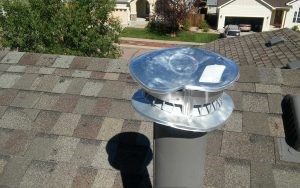
In 2011 or 2012, a roofing laborer was asked by the roofing contractor to replace the vent cap as part of the roofing work. The laborer put the cap on incorrectly by pushing the cap all the way down onto the top of the pipe. There is supposed to be a gap between the top of the pipe and the underside of the cap so that your gas exhaust can vent out of your house. If it can’t vent, the pilot light can extinguish. When that happens there is a potential for carbon monoxide to accumulate in your home. This error by the roofing laborer had a tragic result for the family that lived in the house.
Due to this very high-profile accident, our local governing body, Pike Peak Regional Building, stated that roofers were not allowed to do this work. If it was to be done as part of the roof replacement, a mechanical contractor was to do the work. Very recently, that restriction has been lifted and roofers are now again allowed to replace these caps in El Paso County, however, Homestead Roofing has made an intentional decision to not have our laborers do this replacement and to continue hiring a mechanical contractor for this work.
Recently, I met our mechanical contractor at a job site to help him with the ladder work to get on the roof. Jim Kolar works for Furnace World in sales and project management and has been exceptionally helpful by doing these cap replacements for us for the last 3 years. As we sat on the roof that warm, February day, Jim told me a story that re-solidified my decision to always have him do these cap replacements for us. Their technicians had gone to a house to do a furnace replacement. After getting the brand new furnace installed, they had troubles keeping it running. They investigated all the possible problems and then finally went on the roof to check the vent. They found a wrong cap installed on the furnace vent pipe. The roofing laborer had a 5” cap to put on a 4” pipe. Instead of getting a new, different cap, he just put that cap on the pipe, let it fall as far down as it would go, and then screwed it on. With no ventilation, the pilot light kept going out and preventing the new furnace from working correctly. This was a tragedy that was prevented by the timing – if the owners hadn’t bought a new furnace around the time the roof had been done, they may not have discovered this problem in time and had a house full of carbon monoxide.
But Why Replace It At All?
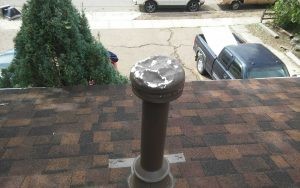
That’s a good question. Many of these caps aren’t dented enough to cause a problem, but every now and then we see some that are
completely demolished. We had one come in recently that had been smashed by hail so bad that ventilation was almost at 0% and was causing carbon monoxide to back up into the residence. This cap looked like a hamburger. The top half of it just squashed straight down onto the bottom half. Although it doesn’t seem like this is a critical component of your insurance claim, it can, if not replaced or not replaced correctly, become a danger to the occupants of the home.
We would like to see PPRBD renew the restriction on roofers being allowed to do this work. To replace one of these caps literally takes about 60 seconds, but I prefer having the peace of mind knowing that it has been done correctly when we ask Jim to do this for us and not trusting our laborers to try to do it. Sometimes, though, there’s a lot more involved in the replacements. Sometimes the pipe itself is corroded and needs repair or replacement, and we certainly don’t want an untrained person doing that. Most insurance companies recognize this need, too, and either include an HVAC labor minimum cost in their claims, or they allow us to supplement that cost and they pay it after the job is complete.
So if we’re doing your roof or we’ve already done it, and you have questions about the HVAC line items in your claim and want more information, just let us know by contacting us today!

